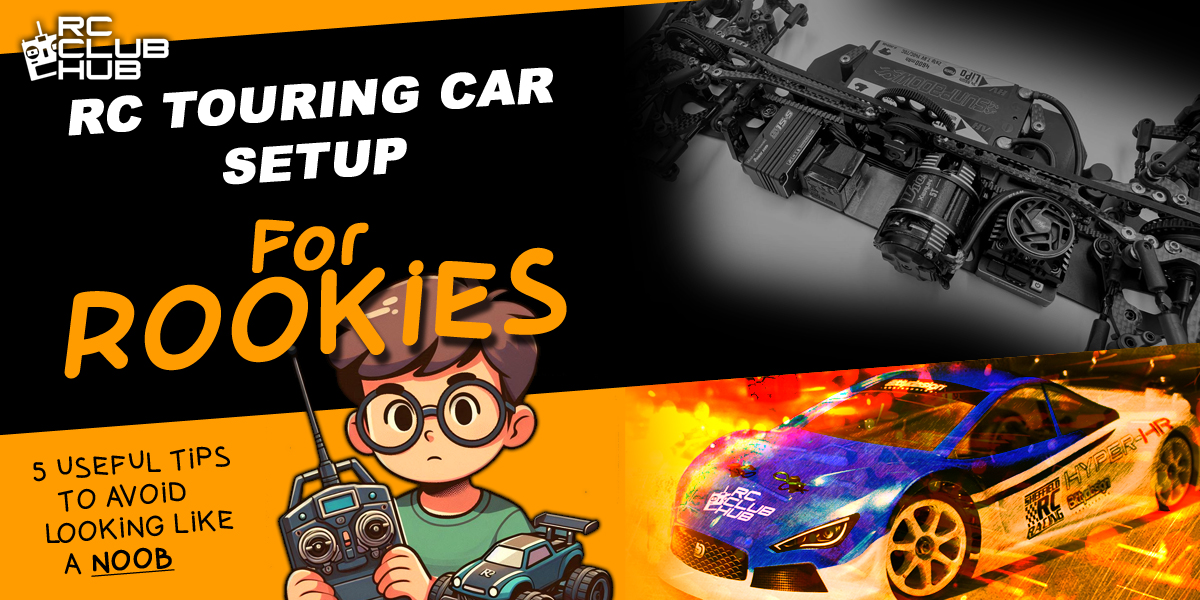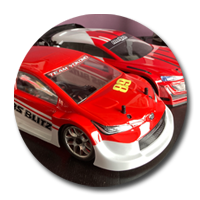Sometimes, we focus so much on fine-tuning our setups that we overlook basic issues that could be ruining our car’s handling. With that in mind, we’ve put together a list of simple checks that might seem obvious to experienced racers, but even seasoned pros can slip up on them at times.
This list is also perfect for beginners. In the early stages of RC racing, preparation is far more important than tweaking the setup. Your car needs to be consistent so you can develop your driving skills. If your car behaves unpredictably due to unnoticed broken parts, it will take longer to build confidence and improve.
Here are five essential checks every racer should do at every meeting to avoid erratic handling issues.
1. Correctly Checking Ride Height

Ride height is crucial in every RC race class. The way your car’s weight is distributed around the track significantly affects handling. While shocks and springs control weight transfer, ride height is the foundation of the setup. Even a 0.5mm change at the front can have a similar effect to fitting a harder spring. Since small adjustments can have a big impact, always check your ride height regularly, especially after making changes.
Key points to remember:
-
Always check ride height with race tyres fitted and the battery installed.
-
Touring cars generally perform best with a ride height around 5mm.
-
The rear of the car should usually be slightly higher than the front (0.2-0.4mm difference), known as chassis rake.
-
If the chassis scrapes the track, it can cause the car to spin out. Check for scuff marks on the bottom of the chassis.
2. Visually Checking Wheel Alignment

Many racers rely too much on setup stations. While these tools are useful, mistakes can happen, and even high-end setup stations can give incorrect readings. Top racers always double-check their setups by visually inspecting the car’s geometry.
Things to check:
-
Ensure the rear wheels have slight toe-in and the front wheels have slight toe-out.
-
All four wheels should look balanced compared to their opposite side.
-
Check the camber to ensure the wheels have a negative incline from the ground.

3. Steering Checks
Steering components are active moving parts that absorb impacts, making them prone to loosening or wearing out. If the steering system isn’t working properly, the car will handle unpredictably. Regular checks can help prevent race-day disasters.
What to check:
-
Wobble test – Gently wiggle the steering and suspension parts with your fingers. If something is loose, you’ll feel it immediately.
-
Servo centring – Turn the car on and move the steering left and right. When returning to the centre, the servo should return to its original position. If not, you’ll be constantly correcting it on the track.
-
Steering balance – Make sure the car turns evenly in both directions by comparing the gaps to the steering stops.
-
Use a servo saver – This protects the servo from impacts and prevents linkages from coming loose. Some argue it slows down steering response, but most drivers naturally adapt.
4. Checking for Tyre & Wheel Issues

Tyres are one of the most important factors in RC racing. Even with a perfect setup, poor tyres can ruin performance. Since tyres generate grip through friction, they naturally wear out, and wheels can suffer damage from impacts. Checking them regularly is essential.
Things to look for:
-
Excessive wear – If the surface is thinning or breaking apart, it’s time to replace them.
-
Cracked wheels – Small cracks can develop before total failure.
-
Glue failures – Sometimes, tyre glue can fail, causing the tyre to separate from the rim.
-
Tyre choice – Ensure you’re using the same compound as most other racers.
5. Checking for Loose Screws

RC cars vibrate a lot, which can cause screws to loosen over time. If a critical screw comes loose, it can drastically affect handling. Some racers use thread lock on every screw, but this can cause problems when maintenance is needed. Instead, make a habit of quickly checking screws throughout the day.
Best practices:
-
During race meetings, take a moment to check as many screws as possible with your hex driver.
-
Before each final, do a last-minute check to ensure everything is secure.
-
Avoid excessive thread lock—only use it on screws that need extra security.
Final Thoughts
By following these simple checks, you’ll avoid unnecessary handling issues and look like a seasoned racer instead of a rookie. Consistency is key in RC racing, and these basic habits will help you gain confidence and improve your performance. Even the best drivers stick to these fundamental checks—so make them part of your routine and get the best out of your car!
|



 ClubHub Steve
ClubHub Steve